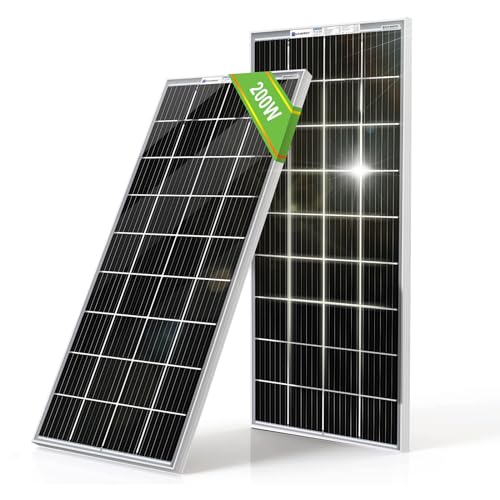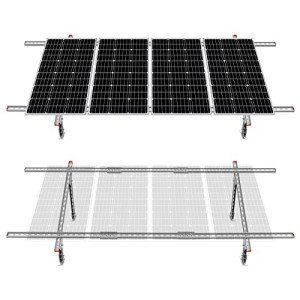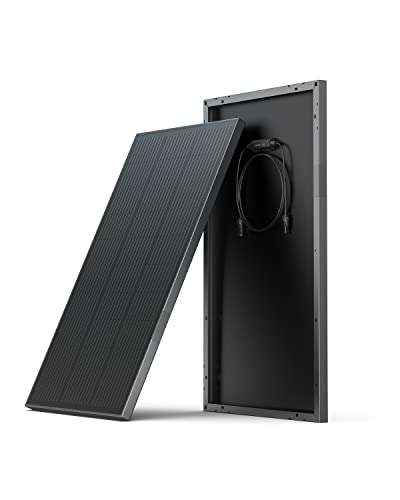When you're diving into the world of solar panels, figuring out solar panel cost can feel like a maze. But don’t worry; we’re breaking it all down. First off, the type of solar panel you choose plays a massive role. There are different kinds like monocrystalline, polycrystalline, and thin-film. Monocrystalline panels are usually the most efficient but also come with a higher price tag. If you're looking for something budget-friendly, polycrystalline could be your go-to. It’s essential to weigh efficiency against cost when making your decision.
Next up is the size of your solar panel system. A larger system naturally costs more. If your roof has ample space and you want to generate more power, go big! However, if you're only looking to offset part of your electricity bill, a smaller setup may be just right. The installation costs also vary depending on how complex the job is. If you have a tricky roof or need extra mounting hardware, expect those costs to climb.
Local regulations and incentives can also make a big difference in solar panel cost. Some states offer tax credits or rebates that can help lower your overall expenses. It pays to do a bit of research on what's available in your area; sometimes, those savings can make a substantial impact on your wallet. Plus, keep an eye on installation costs—some companies charge more than others, so shop around!
Lastly, don’t forget about the quality of components. Cheaper panels might save you money upfront, but they could lead to higher costs later on with repairs or replacements. It's often smarter to invest in quality that comes with a good warranty. Look for brands known for durability and performance. Remember, solar panel cost isn't just about the price tag; it’s about what you get in return over time.
Average Costs You Should Know
Location really matters when it comes to solar panel cost. In sunny states like California, prices can be on the lower end because of strong incentives and ample sunlight. In cloudier regions, costs might be higher because you'll need more panels to generate the same amount of power. Be sure to check your local weather conditions and incentives.
Another factor to consider is how much energy you use. If you're running a big household with lots of gadgets, your solar panel cost will reflect that need for more power. A smaller home with lower energy needs can get by with a more affordable system. Take a look at your utility bills to figure out how much energy you consume each month.
Don’t forget about installation costs! This can vary depending on your roof type and how much work is involved. A flat roof, for example, might need a different setup than a sloped one, and that could affect your solar panel cost. Make sure to get a few quotes from reliable installers to compare.
ECO-WORTHY 100W Bifacial Monocrystalline Solar Panels
Maximize your energy output with these efficient and versatile solar panels that harness sunlight from both sides
Product information
$154.99 $136.99
Product Review Score
4.28 out of 5 stars
179 reviewsProduct links
Hidden Fees and Considerations
When thinking about solar panel cost, it’s easy to focus on the upfront price. But a few hidden fees can really sneak up on you. You’ve got to consider things like installation costs, which can vary widely depending on your roof type, the complexity of the job, and where you live. It’s important to get a clear estimate that includes all these factors upfront.
Don’t forget about maintenance costs! While solar panels are low-maintenance, they'll still need occasional cleaning and inspections to keep them in tip-top shape. Factor in these costs when calculating your total solar panel cost. You don’t want any surprises down the line!
Another consideration is local regulations and permits. Some areas require specific permits before you can install solar panels. These can add extra steps and costs to your solar panel journey. Make sure you check what’s needed in your area to avoid unexpected fees.
Lastly, be aware of how your solar panel setup might affect your home insurance. It’s a good idea to talk to your insurance agent about whether adding solar panels will change your premium. You want to make sure you have full coverage without any hidden costs creeping in.
ECO-WORTHY Adjustable Solar Panel Mounting Brackets Kit
ECO-WORTHY Adjustable Solar Panel Mounting Brackets Kit keeps your solar panels secure and easily adjustable for optimal sun exposure
Product information
$169.99 $118.99
Product Review Score
4.56 out of 5 stars
50 reviewsProduct links
Long Term Savings on Solar Energy
When you think about solar panel cost, it’s easy to get caught up in the upfront expense. But hold on! Let’s talk about the long-term savings that come with making the switch to solar energy. Sure, the initial investment might feel heavy, but the payoff can be huge. Over time, you’ll start seeing significant reductions in your electricity bills.
Most homeowners notice a drop in energy expenses right away. With sunshine powering your home, you decrease your reliance on the grid. Depending on where you live, you might even earn credits for the extra energy your panels produce. That’s right—selling back energy can turn your system into a money-maker!
Don’t forget about tax incentives and rebates! Many states offer financial perks for installing solar panels, which helps lower that initial solar panel cost. Plus, as energy prices continue to rise, you’ll protect yourself from future price hikes. It’s like locking in a great deal for the next few decades!
Maintenance on solar panels is pretty minimal, too. You won’t have to worry about a ton of upkeep costs. Most systems come with warranties lasting 20-25 years, giving you peace of mind. Overall, when you crunch the numbers, investing in solar really does lead to solid savings in the long run.






